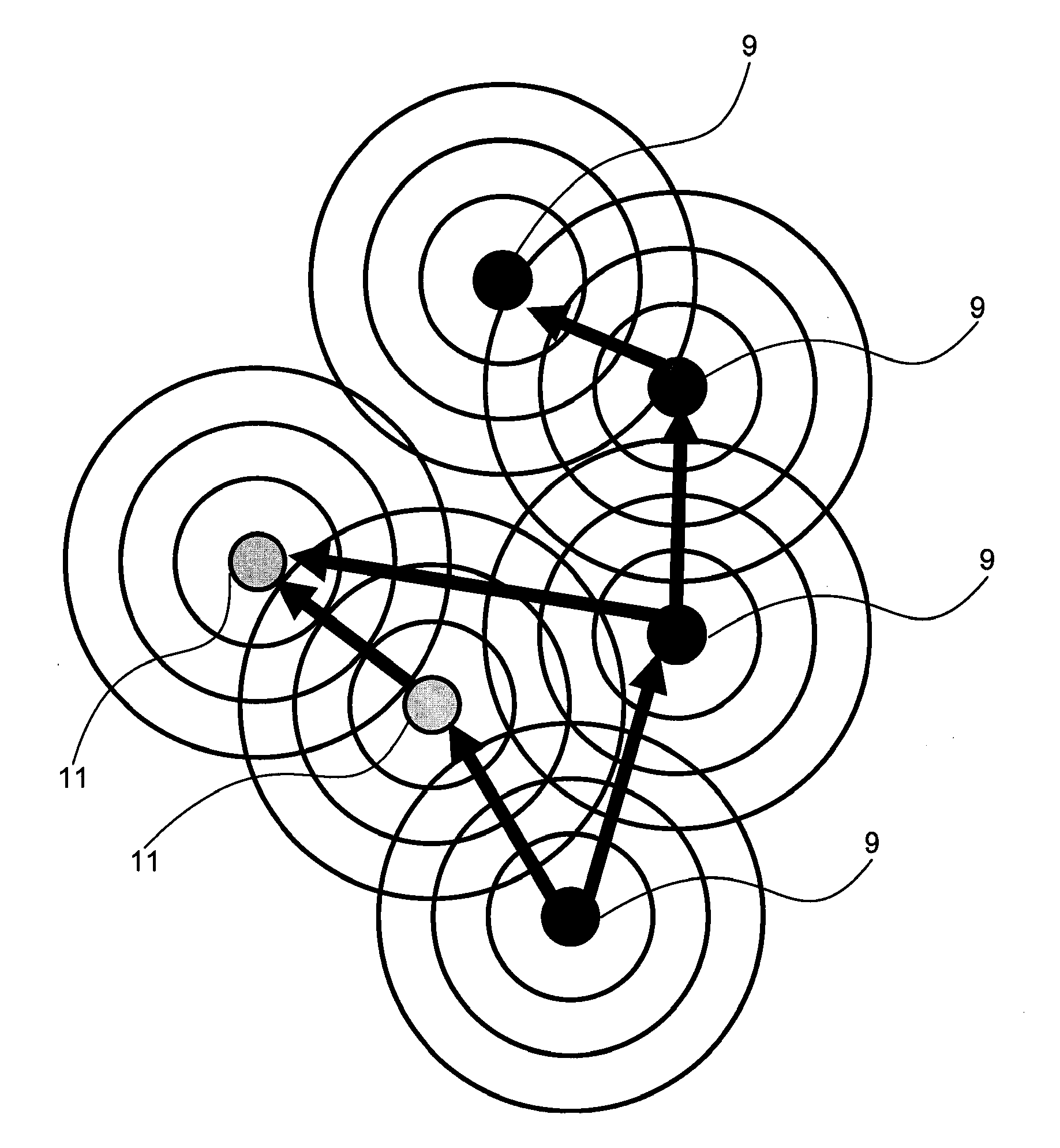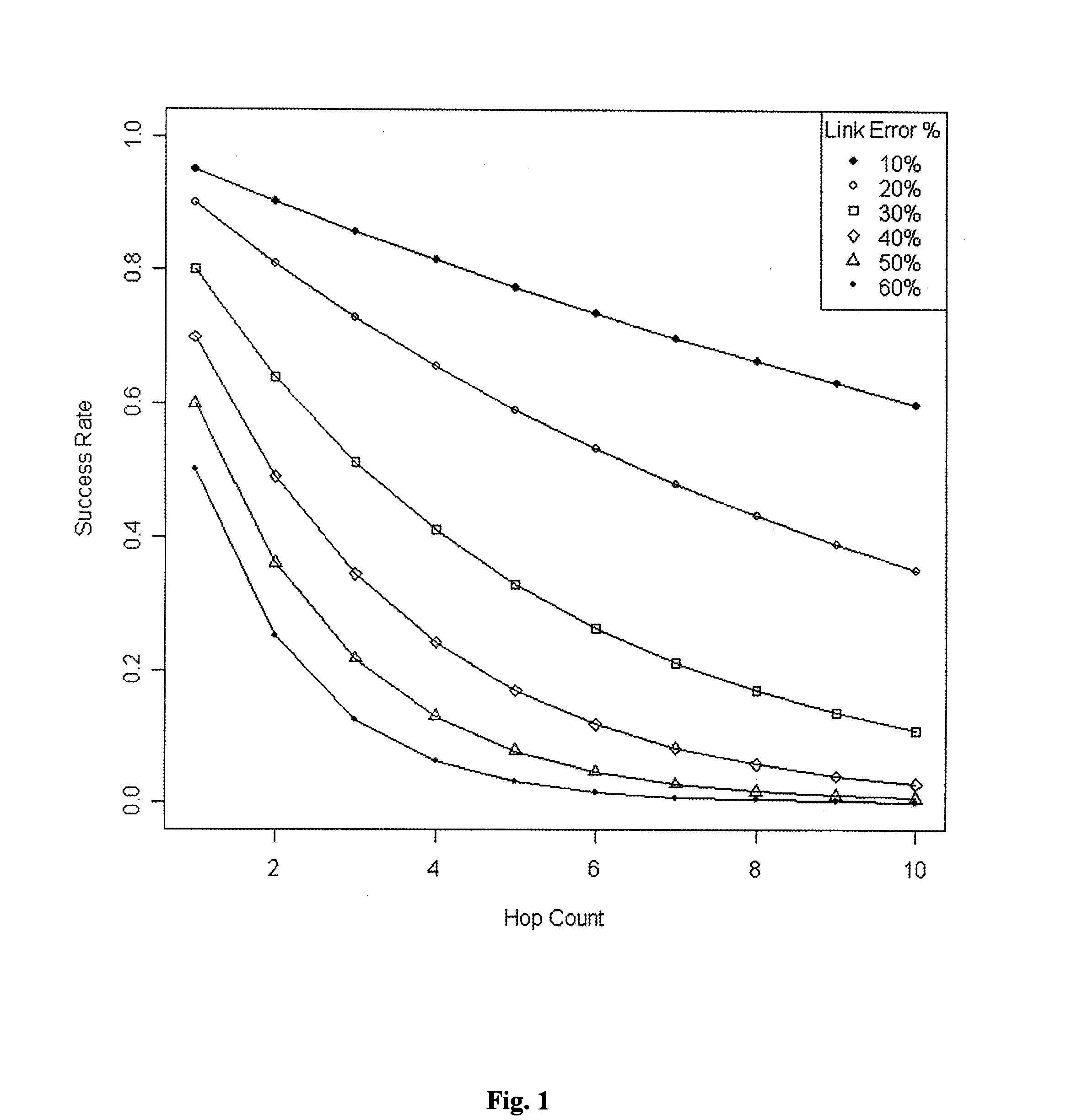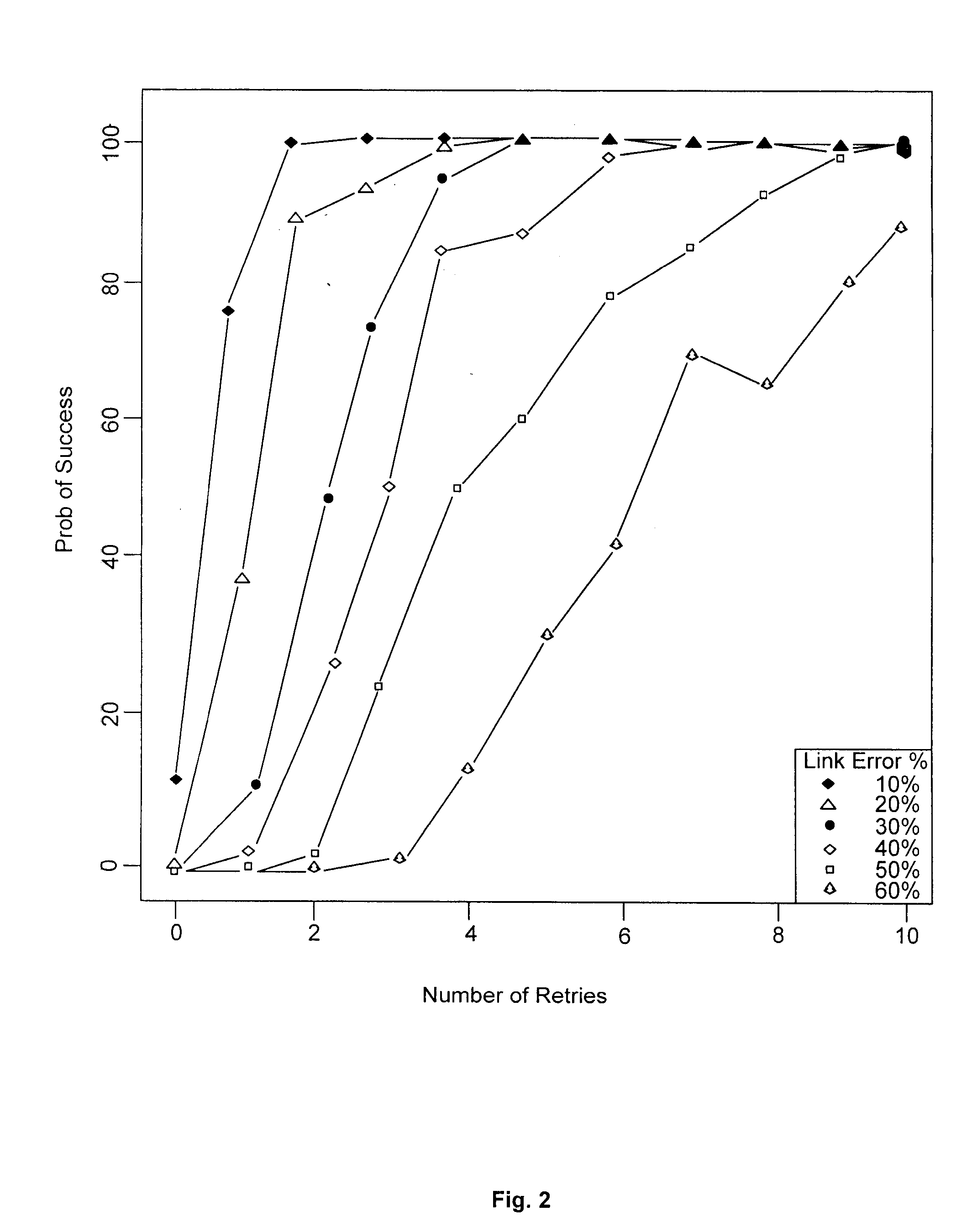Delivery of Data Packets via Aggregated Spatial Distribution Overlay on a Mesh Network
a data packet and spatial distribution technology, applied in the field of mesh networks, can solve the problems of network draining available energy, nodes using bad paths, and affecting the efficiency of data packet delivery, and achieve the effect of saving available energy
- Summary
- Abstract
- Description
- Claims
- Application Information
AI Technical Summary
Benefits of technology
Problems solved by technology
Method used
Image
Examples
Embodiment Construction
[0036] Referring now to FIG. 3 there is shown a graphic illustration of a segment of a wireless network in which a plurality of nodes or modules 9 are spatially oriented substantially the radio transmission distance away from each toward a base station (not shown). Each such node or module 9 of the Wireless Sensor Network (WSN) uses low-bandwidth radios to create a self-healing wireless mesh network in which each node or module is capable of receiving and transmitting data packets or messages, and of sending a signal indicative of having received a data packet or message from another node. In WSN networks, nodes route data toward a centralized point in the network referred to as a base station. Nodes are battery operated and attempt to increase their lifetime by minimizing radio communication, a highly energy-expensive action. Thus, as illustrated in FIG. 3, routing through the network must attempt to find the most reliable path to deliver data via one or more nodes to a base statio...
PUM
 Login to View More
Login to View More Abstract
Description
Claims
Application Information
 Login to View More
Login to View More - R&D
- Intellectual Property
- Life Sciences
- Materials
- Tech Scout
- Unparalleled Data Quality
- Higher Quality Content
- 60% Fewer Hallucinations
Browse by: Latest US Patents, China's latest patents, Technical Efficacy Thesaurus, Application Domain, Technology Topic, Popular Technical Reports.
© 2025 PatSnap. All rights reserved.Legal|Privacy policy|Modern Slavery Act Transparency Statement|Sitemap|About US| Contact US: help@patsnap.com



